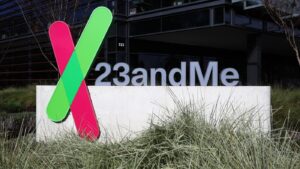
AUSTIN, Texas – Tesla’s recent robotaxi launch in Austin was anything but a traditional media event. Instead, it was a showcase dominated by a fervent group of Elon Musk superfans and Tesla influencers, overshadowing the presence of traditional journalists.
Immediate Impact
The launch, which took place last week, saw coverage primarily from a tight-knit community of Tesla enthusiasts. These influencers, many of whom openly support CEO Elon Musk’s vision, filled the void left by absent critical journalists. In a move that reflects Musk’s longstanding antagonism towards traditional media, these superfans actively ridiculed journalists attempting to probe the new technology.
Key Details Emerge
One notable influencer, known as Zack on X, shared that he was approached by a Reuters journalist but chose to ignore them. This sentiment was echoed across social media, with posts supporting the exclusion of traditional media. Kim Java, another Tesla influencer with a significant YouTube following, declined media requests to maintain control over her narrative.
“The best response would [be] to add a precondition and ask them to go on camera blanket apologising for all the lies and smears against Elon and Tesla first,” the account Tesla insights wrote.
Industry Response
Experts have noted the implications of this media strategy. Joan Donovan, a professor at Boston University, described the event as a form of “corporate propaganda,” while Ed Niedermeyer, author of Ludicrous: The Unvarnished Story of Tesla Motors, likened the influencers to a “Greek chorus” promoting Tesla’s image.
“The big push around robotaxis is explicitly about recuperating the reputation of Tesla,” Donovan says. “It has a bit of an echo chamber effect.”
By the Numbers
- Zack’s post received over 2,000 likes.
- Kim Java boasts 258,000 YouTube subscribers.
Background Context
This development builds on Tesla’s history of media antagonism. The company dissolved its PR team in 2020 and has since limited its interactions with traditional media. The acquisition of Twitter by Musk in 2022 further enabled him to control the narrative by banning critical accounts.
Meanwhile, Tesla’s fanbase has grown, resembling early Apple enthusiasts. Initially organic, this support has been nurtured by Tesla, offering rewards and exclusive access to loyal supporters.
What Comes Next
Operating in an echo chamber can only sustain Tesla for so long. To realize Musk’s vision of widespread autonomous vehicles, the company will eventually need to engage with the broader public, including critics. This could expose more of Tesla’s shortcomings, which even its influencers struggle to overlook.
Tesla did not respond to requests for comment, and the influencers cited in this article have yet to reply to inquiries.
The timing is particularly significant because the event highlights the growing divide between traditional media and new influencer-led coverage. As Tesla continues to navigate this landscape, the implications for its public perception and market success remain to be seen.






